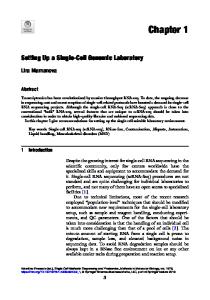Setting up a nanolab inside a transmission electron microscope for two-dimensional materials research
- PDF / 2,775,940 Bytes
- 24 Pages / 584.957 x 782.986 pts Page_size
- 29 Downloads / 302 Views
dimensional (2D) materials, such as graphene, hexagonal boron nitride, and molybdenum sulfide (MoS2), have attracted considerable interest from the academia and industry because of their extraordinary properties. With the remarkable development of transmission electron microscope (TEM), nanolabs can be established inside the TEM to simulate a real environment by introducing external fields, such as electron irradiation, thermal excitation, electrical field, and mechanical force, into the system. In consequence, besides static structural characterization, in situ TEM can also realize dynamic observation of the evolution in structures and properties of 2D materials. This extension promises an enormous potential for manipulating and engineering 2D materials at the atomic scale with desired structures and properties for future applications. In this study, we review the recent progress of in situ electron microscopy studies of 2D materials, including atomic resolution characterization, in situ growth, nanofabrication, and property characterization.
I. INTRODUCTION
Graphene, as the first 2D atomic crystal, possesses supreme properties, such as extreme mechanical strength, excellent electronic and thermal conductivities, high surface area, and impermeability to gas.2 Given these properties, graphene is feasible for applications in various fields, including electronics, photonics, composite materials, paints and coatings, energy generation and storage, sensors and metrology, and bioapplications.3 However, graphene is unlikely to be used for fabricating high-performance integrated logic circuits because of the absence of a band gap. Scientists have explored alternative materials, including structurally related 2D materials, such as hexagonal boron nitride (h-BN),4 transition metal dichalcogenides,5 layered transition oxides, and topological insulators of bismuth telluride (Bi2Te3) and bismuth selenide (Bi2Se3), which have gained extensive interest.6 Like graphene, these 2D materials are important in various applications because of their distinct properties. Since the novel 2D materials will function significantly in the future development of materials, discovering the essential relationship between their structure and properties is vital. Transmission electron microscope (TEM) has undergone remarkable development, and achieved atomic resolution by the inclusion of aberration correctors and other techniques, such as monochromators, in recent years.7–9 1
Contributing Editor: Eric A. Stach a) Address all correspondence to this author. e-mail: [email protected] This paper has been selected as an Invited Feature Paper. DOI: 10.1557/jmr.2015.304 J. Mater. Res., Vol. 30, No. 21, Nov 13, 2015
TEM has become an indispensable tool for detailed characterization of the atomic structures of 2D materials. With a full understanding of atomic structures of 2D materials, further investigating the structural evolution and structure–property relationships in a real environment is feasible. We can simulate a real environment by introducing external fi
Data Loading...











